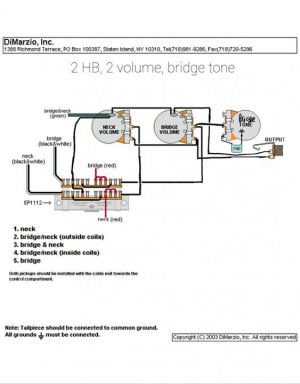Despised
Member
Hey guys.
So after playing with a guitar with a set of DiMarzio D-Activator 7's in it, I am finding that full volume it tends to sound like a wah is cocked in the full down position, very tin-y. I am able to tame it with the tone pot by rolling it down almost half way, but I was wondering if there was a capacitor or something I could wire on the volume pot that would do the same thing...
I also plan on changing the standard volume pot for a concentric pot (an Alpha B500k/B500K...) so each pickup can have its own volume pot...
Is there something I can wire in on the bridge pickup volume that would take some of the high-end bite out of the signal at full volume, without having to use the tone pot for it and affecting the tone of the neck pickup when I switch to the middle or neck positions?? Kinda curious and would love to do and have it if there is... Won't mind using the tone pot if not, but figured I'd ask and see what options there are for something like this...
Thanks!!
So after playing with a guitar with a set of DiMarzio D-Activator 7's in it, I am finding that full volume it tends to sound like a wah is cocked in the full down position, very tin-y. I am able to tame it with the tone pot by rolling it down almost half way, but I was wondering if there was a capacitor or something I could wire on the volume pot that would do the same thing...
I also plan on changing the standard volume pot for a concentric pot (an Alpha B500k/B500K...) so each pickup can have its own volume pot...
Is there something I can wire in on the bridge pickup volume that would take some of the high-end bite out of the signal at full volume, without having to use the tone pot for it and affecting the tone of the neck pickup when I switch to the middle or neck positions?? Kinda curious and would love to do and have it if there is... Won't mind using the tone pot if not, but figured I'd ask and see what options there are for something like this...
Thanks!!

